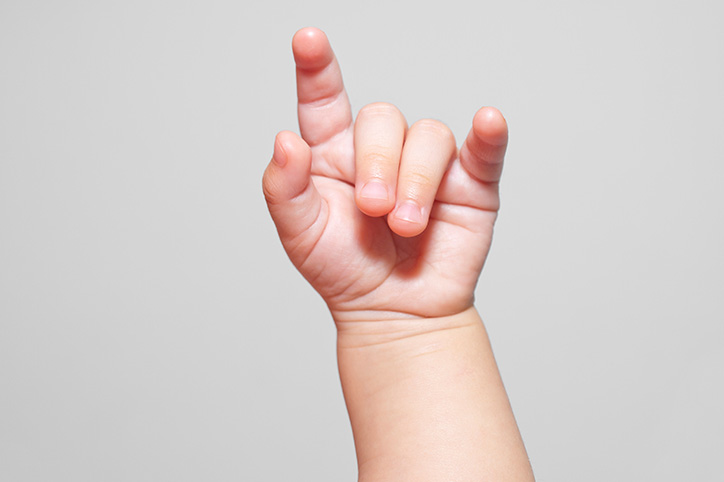We don’t have to tell you that deciphering a baby’s thoughts, feelings and wishes isn’t an easy task. While there’s no simple solution, baby sign language can offer a key.
“Baby sign language is a way of communicating with babies before verbal speech is available using hand gestures, or signs, that correspond with verbal words,” says Lee Ann Steyns, founder of Signing Babies. “It allows hearing parents and caregivers a way to enhance communication with their babies before they can talk. Parents show the corresponding sign along with saying the verbal word to create context for their babies and repeat it daily for the little ones to learn experientially with them.
Babies are often able to communicate with simple hand gestures to express themselves even before they may be able to say the words. “Incorporating baby sign can decrease frustration for the baby and parent. The baby can get across their basic needs and wants, and the parent can better understand what the baby is trying to communicate. This can reduce tears and tantrums,” says Jann Fujimoto, MS CCC-SLP, founder of SpeechWorks.
Baby sign language can also work to boosts confidence for babies who know how to express their needs as well as for parents who know what their babies want, says Steyns adding that it can also help support verbal language acquisition within multi-lingual households as the signs can be a visual anchor for all the verbal languages baby is hearing. “Further, it can create a ‘back-up’ skill that older babies and toddlers can access when they are feeling shy or unable to use their voice.”
At what age should parents start with sign language?
Research shows that some babies start showing recognition of sign language around 4-6 months, so there’s no need to wait. On the flip side, Steyns says it’s never too late to start doing signs with older babies and toddlers because signing reinforces verbal speech acquisition and the comprehension of words.
“Sometimes adding a new skill as a new parent can feel overwhelming, so I always suggest that parents start learning and showing signs to their babies when they feel ready – it’s the repetition that babies recognize and follow, so it’s ideal to start whenever parents feel able to create fairly consistent signing moments each day,” says Steyns.
Here are some of the ‘top’ baby signs:
“Some perfect starter signs are MILK, MORE and ALL DONE as well as signs that capture things that babies are intrinsically interested in to allow for vibrant conversations like BOOK, PLAY and BIRD,” says Steyns.
MILK: “Hold one hand in front of the body and open and close fingers into a fist several times (like a squeezing motion).”
MORE: “Connect fingertips to thumb on both hands and tap these hands together in front of the body, repeating several times.”
ALL DONE / FINISHED: “Hold up both open flat hands, fingers apart, with palms facing you, then swing hands around for palms to face out.”
BOOK: “Press flat open hands together then allow to fall apart, like opening the cover of a book.”
PLAY: “Hold both closed fists in front of the body with pinky fingers and thumbs extended from fist, and twist both wrists.”
BIRD: “Hold index finger and thumb together beside the nose, and open and close like a beak of a bird.”








